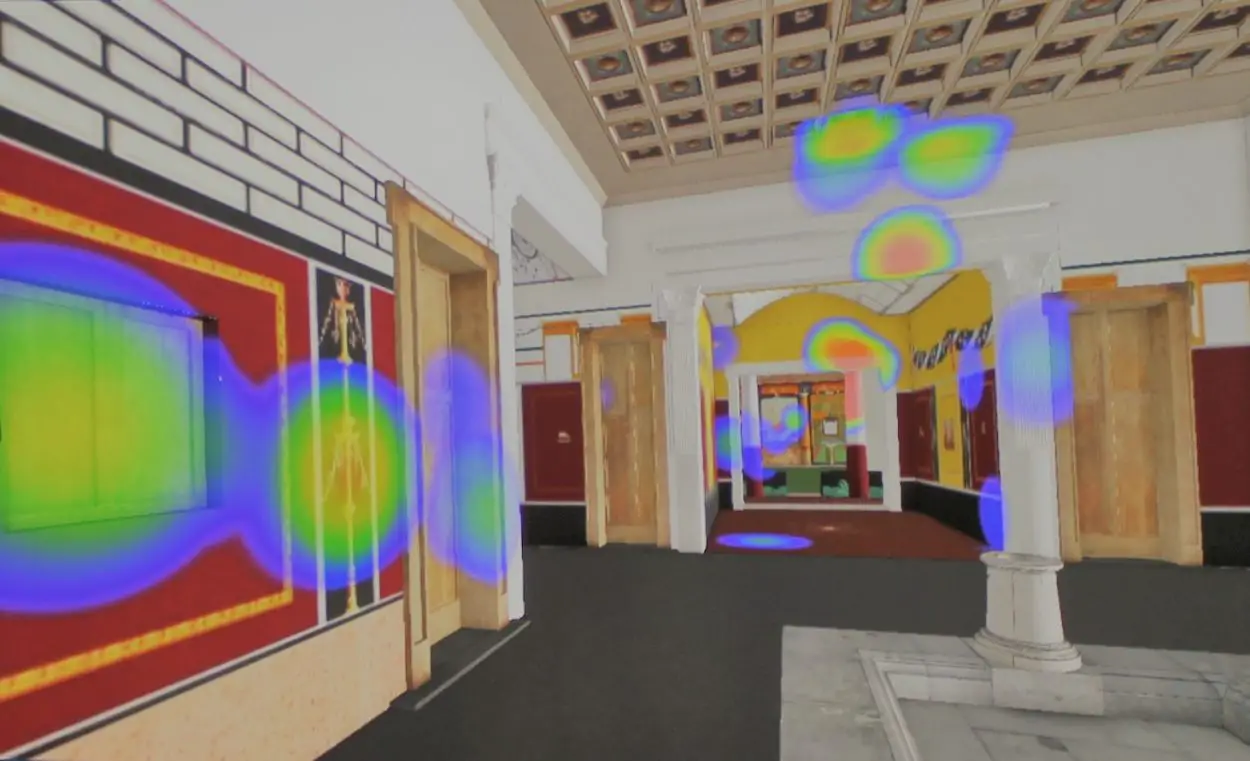Researchers have rebuilt a house from the Roman city of Pompeii using virtual reality, to better understand the motivations behinds Roman design and contemporary architecture.
Pompeii is located in the modern commune of Pompei near Naples in the Campania region of Italy. At its peak, Pompeii had a population of around 20,000 inhabitants and became an important passage for goods arriving by sea.
Pompeii, along with Herculaneum and many villas in the surrounding area was buried under 4 to 6 m (13 to 20 ft) of volcanic ash and pumice in the eruption of Mount Vesuvius in AD 79.
Researchers from the Laboratoriet för Digital Arkeologi, the Humanities laboratory at Lund University, in collaboration with the Pompeii Project have now constructed a virtual reality environment in order to indicate how visual attention was an important consideration of Roman architecture.
“Work and daily activities were intermingled during the day. The house communicated to people about the personal power and status of the owner and his family,” said Danilo Marco Campanaro, a PhD candidate from Lund University and co-author of the research.
However, studying this element of Roman house design has been challenging. The damage caused by centuries of neglect, weathering, and volcanoes hides many of the eye-catching nuances Romans built into their homes.

Advances in computer reconstructions have helped shed light on this issue but now Danilo Marco Campanaro and Dr Giacomo Landeschi from Lund University are taking it a step further. Their research, published in the journal Antiquity, used spatial analysis and eye-tracking to monitor volunteers as they explored a Roman house in virtual reality.
“Eye-tracking technology and virtual reality do now provide unprecedented opportunities to assess the visual qualities of ancient spaces,” said Dr Giacomo Landeschi. It allowed them to carry out experiments where they measure the visual attention of volunteers as they toured the house, tracking what caught their eyes.
The volunteers were exploring a virtual reconstruction of House of the Greek Epigrams, an impressive home in northeast Pompeii once decorated with lavish frescoes. It was destroyed in the eruption of Vesuvius in AD 79. The house was modelled in 3D, complete with restored paintings, and imported into the videogame engine Unity to explore in VR.
“The results of this study show how the owner of the house stimulated the visitor’s senses to convey a message about its power and wealth,” said Danilo Marco Campanaro.
This adds to the growing list of architectural tricks Romans employed when designing their houses. Previous research had found some owners used angled walls and raised floors so the interior might appear bigger to people looking in through the front door.
As such, these initial results indicate such experiments can help shed light on why the Romans designed their houses the way they did. However, the researchers note it is only scratching the surface of strategies Romans used to impress visitors to their home.
“The next step in this study could be to overlap the results with multisensory research that includes olfaction and auditory involvement,” said Dr Giacomo Landeschi. Find out more
Header Image Credit : Antiquity





